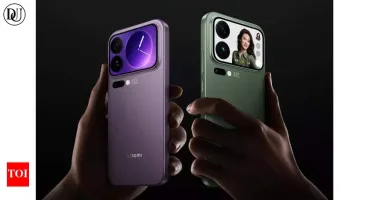Technology should work for everyone—not just those who fit a narrow definition of "typical." Apple seems to understand this better than most, and their latest accessibility announcements have me feeling genuinely emotional about the power of inclusive design.
When Your Phone Finally "Gets" You
Have you ever struggled to make technology understand your needs? Maybe you've shouted at Siri repeatedly while she misunderstands your accent, or squinted painfully at a too-small screen. Now imagine those challenges multiplied tenfold if you have a disability.
Apple's upcoming Personal Voice feature feels like something straight from a sci-fi movie—except it's real and coming to your devices this year. In just 15 minutes of reading random text prompts, your iPhone or iPad can create a voice that sounds just like you. For someone losing their ability to speak due to conditions like ALS, this isn't just convenient—it's life-changing. It means still being able to tell your children "I love you" in your own voice, not a robotic substitute.
The beauty of this feature? It works completely on-device. Your voice stays private, and you don't need an internet connection to use it once it's set up. Privacy meets accessibility in the most human way possible.
When Your Eyes Need a Break (But You Still Need Your Phone)
We've all had those nights when our eyes burn from screen time, but we still need to finish that one last email. Now imagine navigating life when every screen interaction causes pain or difficulty.
Enter Apple's Eye Tracking mode. With just your eyes, you'll be able to control your iPhone or iPad—no hands needed. It tracks where you're looking and turns your gaze into action. Pause on an item to select it, look away to cancel. For people with limited mobility, this isn't just convenient—it's independence.
And then there's the new Vocal Shortcuts feature. Imagine creating custom sounds (like a click or hum) that can trigger specific actions on your device. For someone who can't use traditional gestures or voice commands, this opens up a world of possibilities.
Because Everyone Deserves Their "Aha!" Moment
Remember the first time you used a feature that made you think, "How did I ever live without this?" Maybe it was predictive text, or Face ID, or wireless charging. For many people with disabilities, these new accessibility features will create that exact feeling.
The Image Description feature feels particularly revolutionary. It doesn't just identify objects in photos; it understands and describes spatial relationships ("the dog is sitting to the left of a red ball"). For blind or low-vision users, this transforms how they experience photos shared by loved ones.
Similarly, the Music Haptics feature translates beats, tempos, and instrumental parts into subtle vibrations. Imagine being able to "feel" the bass drop in your favorite song even if you can't hear it. Music becomes a full-body experience accessible to deaf and hard-of-hearing users.
When "Designed for Everyone" Actually Means Everyone
Here's a secret that more companies should understand: accessibility features often end up benefiting all users, not just those with disabilities.
Think about it—how many times have you used closed captions when watching a show in a noisy room? Or how voice dictation saved you when your hands were full? Features designed for accessibility frequently become mainstream conveniences we all come to rely on.
Apple's new Detection Mode in Magnifier is a perfect example. It helps users find and interact with specific types of controls like buttons and switches by highlighting them on screen. While designed with vision impairments in mind, who hasn't struggled to find a tiny power button on an unfamiliar device?
Tech That Sees the Human First
What strikes me most about these features is how they focus on the person, not the disability. They're not afterthoughts or specialized tools hidden away in settings menus. They're thoughtfully integrated parts of the operating system designed to adapt to human needs.
The new Sound Recognition feature can alert users to important sounds like doorbells, sirens, or a baby crying—directly on their Apple Watch with a distinct haptic pattern for each sound. This isn't just about accessibility; it's about connecting people to their surroundings in meaningful ways.
The Future We All Deserve
As these features roll out later this year, they remind us what technology should be about: enhancing human capability and connection for everyone, regardless of ability.
The most powerful thing about good accessibility design is that it doesn't label or segregate users. It simply removes barriers that shouldn't have existed in the first place. Apple's latest features feel like a step toward a world where technology adapts to humans, not the other way around.
Whether or not you personally need these accessibility features, they represent something we should all care about—technology that respects human diversity and works for everyone. And that's something worth celebrating with every tap, click, glance, or sound we make.










